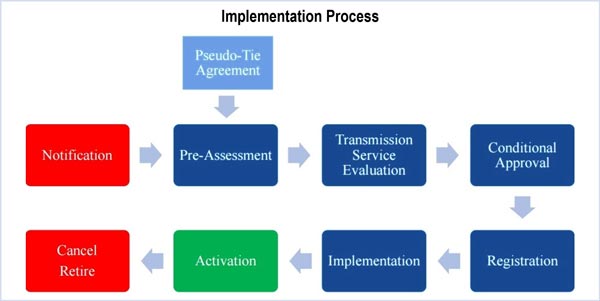By Amanda Durish Cook
MISO’s Reliability Subcommittee last week narrowly approved a more stringent process for deciding on pseudo-tie requests.
The package, approved 5-4 with 13 abstentions at a Dec. 16 special meeting, includes a pro forma pseudo-tie agreement and Business Practices Manual language for generators that intend to sell their capacity or electricity outside the RTO’s footprint.

| MISO
MISO plans to file the proposed rules with FERC in early January. But Senior Director of Regional Operations David Zwergel said the narrow vote and large number of abstentions could give the RTO pause and lead to more discussions to see if minor language changes could address opponents’ concerns.
The new rules say proposed pseudo-ties can be rejected and existing pseudo-ties can be revoked if a market-to-market flowgate is not within 2% of MISO and the neighboring market’s calculated generator-to-load distribution factor. (See MISO Readies Updated Pseudo-Tie Rules.)
Andy Witmeier, of MISO’s operations division, said attaining RTOs — those using generators outside their borders — need to accurately calculate the impact that their pseudo-tied generation has on M2M flowgates.
The 2% provision, however, was a source of stakeholder confusion. Brian Garnett of Duke Energy said MISO had contradicted itself in the BPM language because in one instance, the RTO said the rules would not be retroactively applied, yet existing pseudo-ties could be subjected to the 2% rule. Amanda Schiro, manager of model engineering, said an existing pseudo-tie would only be subject to the 2% rule if it is modified, which would trigger a restudy under the new criteria.
Zwergel said he did not expect MISO to rescind any existing pseudo-ties based on the 2% threshold, but he said it wants to reserve the right in case an attaining RTO drastically changes its model and large discrepancies between models occur. Currently, pseudo-tie modeling in MISO is conducted four times per year, and Witmeier said the RTO’s modeling occurs “within a few weeks of other RTOs.”
WPPI Energy’s Steve Leovy said he’d like to see a more stringent tolerance than MISO’s proposed 2%, but RTO staff said they were confident with that threshold.
Stakeholders asked if MISO would include some of the pseudo-tie language in the MISO-PJM joint operating agreement. Ron Arness, senior manager of seams administration, said MISO could consider memorializing the changes in the JOA, but he did not see a need yet.
“It’s something we could monitor if [MISO’s and PJM’s rules] don’t align,” Arness said. “Today we don’t see any incompatibilities.”
Entergy’s Jeff Knighten, who cast an opposing vote, said his company agreed with a lot of details but “wasn’t ready to sign off yet.” Entergy said the 2% shift factor might work well “under test conditions,” but RTOs might not be able to maintain the same accuracy “under transmission outage conditions which may result in a substantial change in system flows.”
The other companies to provide public comments, NRG Energy and Occidental Chemical, likewise said details around the threshold were lacking and asked for justification.



